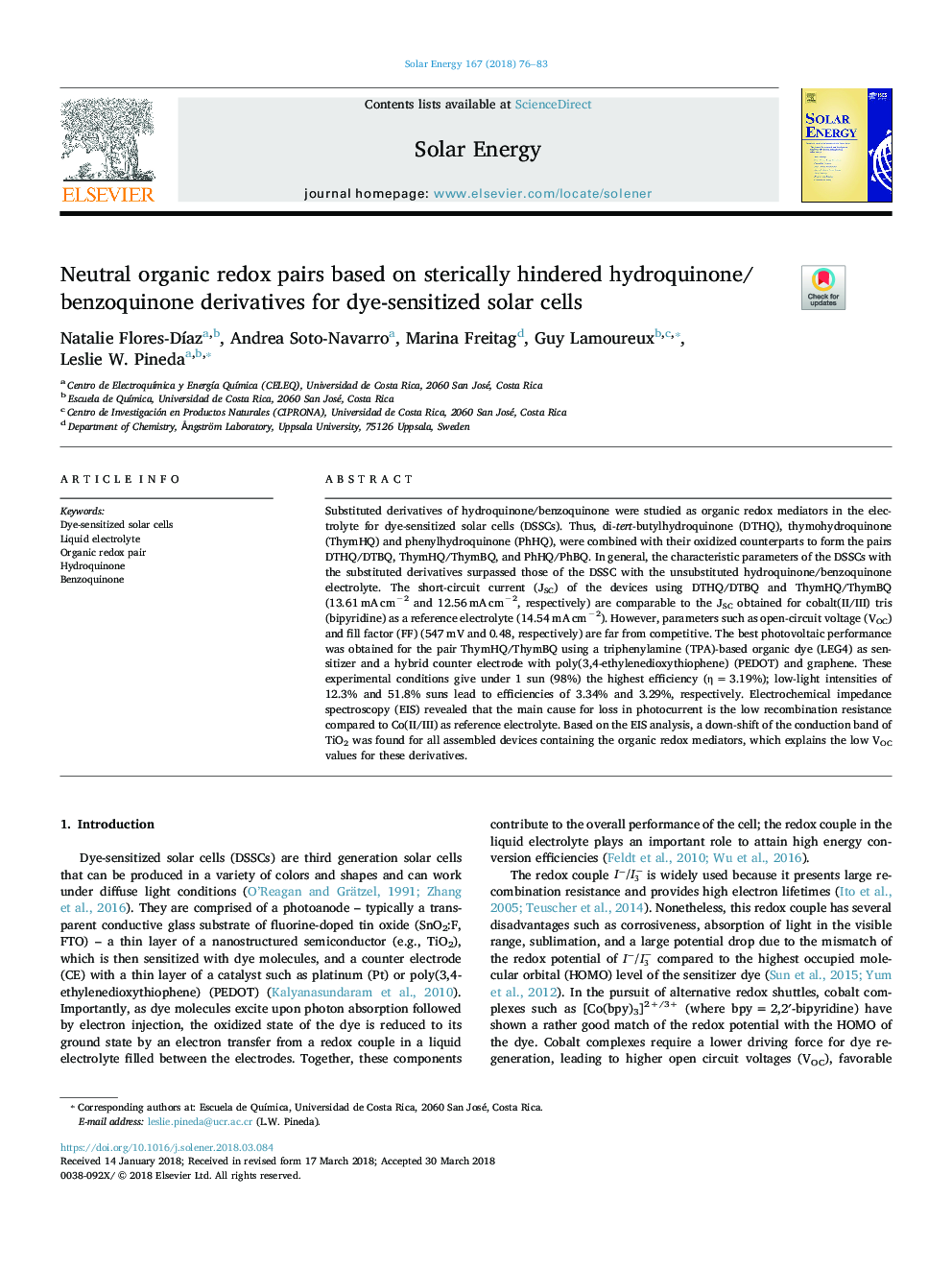| Article ID | Journal | Published Year | Pages | File Type |
|---|---|---|---|---|
| 7935230 | Solar Energy | 2018 | 8 Pages |
Abstract
Substituted derivatives of hydroquinone/benzoquinone were studied as organic redox mediators in the electrolyte for dye-sensitized solar cells (DSSCs). Thus, di-tert-butylhydroquinone (DTHQ), thymohydroquinone (ThymHQ) and phenylhydroquinone (PhHQ), were combined with their oxidized counterparts to form the pairs DTHQ/DTBQ, ThymHQ/ThymBQ, and PhHQ/PhBQ. In general, the characteristic parameters of the DSSCs with the substituted derivatives surpassed those of the DSSC with the unsubstituted hydroquinone/benzoquinone electrolyte. The short-circuit current (JSC) of the devices using DTHQ/DTBQ and ThymHQ/ThymBQ (13.61â¯mAâ¯cmâ2 and 12.56â¯mAâ¯cmâ2, respectively) are comparable to the JSC obtained for cobalt(II/III) tris(bipyridine) as a reference electrolyte (14.54â¯mAâ¯cmâ2). However, parameters such as open-circuit voltage (VOC) and fill factor (FF) (547â¯mV and 0.48, respectively) are far from competitive. The best photovoltaic performance was obtained for the pair ThymHQ/ThymBQ using a triphenylamine (TPA)-based organic dye (LEG4) as sensitizer and a hybrid counter electrode with poly(3,4-ethylenedioxythiophene) (PEDOT) and graphene. These experimental conditions give under 1 sun (98%) the highest efficiency (ηâ¯=â¯3.19%); low-light intensities of 12.3% and 51.8% suns lead to efficiencies of 3.34% and 3.29%, respectively. Electrochemical impedance spectroscopy (EIS) revealed that the main cause for loss in photocurrent is the low recombination resistance compared to Co(II/III) as reference electrolyte. Based on the EIS analysis, a down-shift of the conduction band of TiO2 was found for all assembled devices containing the organic redox mediators, which explains the low VOC values for these derivatives.
Related Topics
Physical Sciences and Engineering
Energy
Renewable Energy, Sustainability and the Environment
Authors
Natalie Flores-DÃaz, Andrea Soto-Navarro, Marina Freitag, Guy Lamoureux, Leslie W. Pineda,
